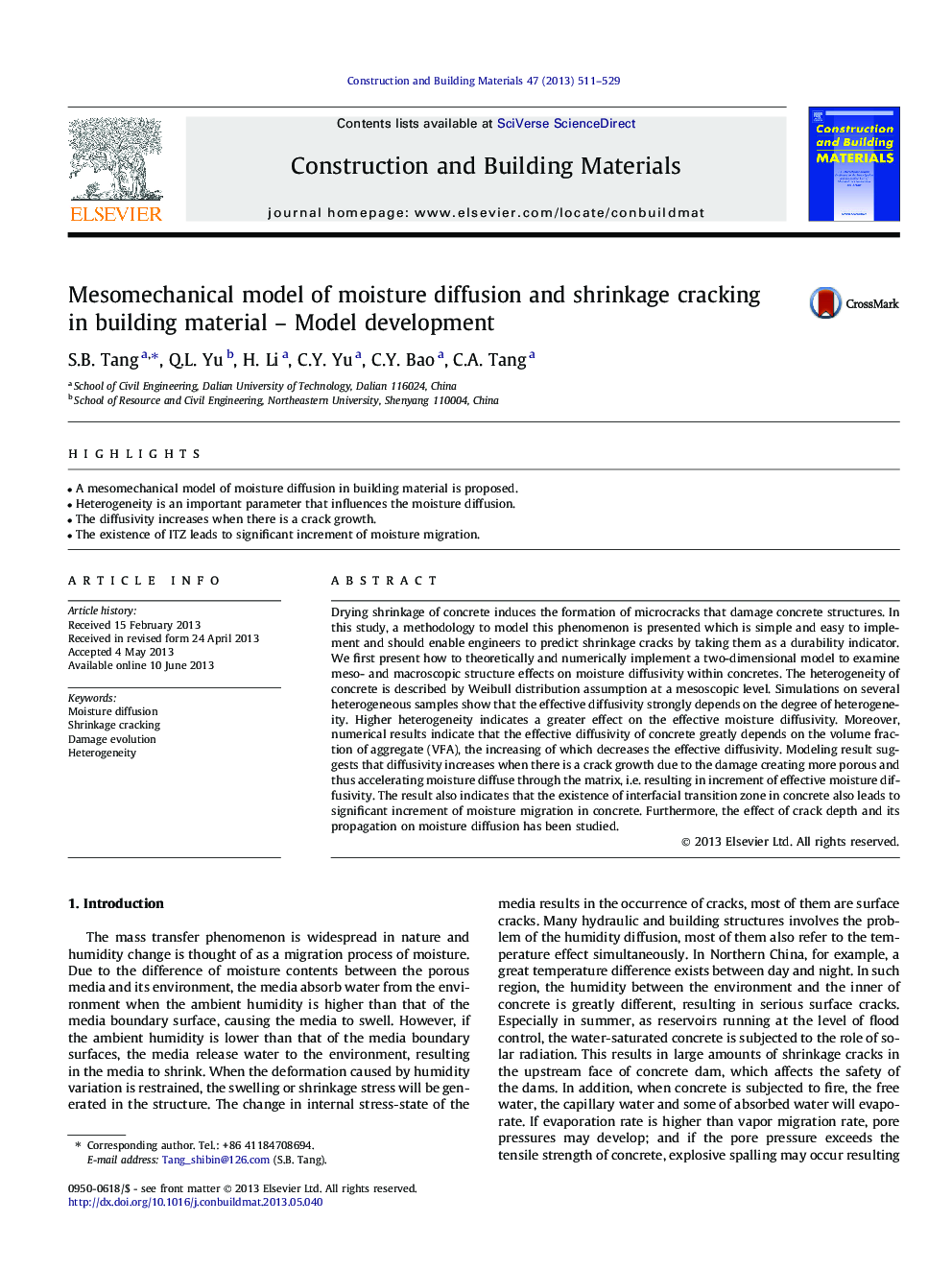| Article ID | Journal | Published Year | Pages | File Type |
|---|---|---|---|---|
| 6725557 | Construction and Building Materials | 2013 | 19 Pages |
Abstract
Drying shrinkage of concrete induces the formation of microcracks that damage concrete structures. In this study, a methodology to model this phenomenon is presented which is simple and easy to implement and should enable engineers to predict shrinkage cracks by taking them as a durability indicator. We first present how to theoretically and numerically implement a two-dimensional model to examine meso- and macroscopic structure effects on moisture diffusivity within concretes. The heterogeneity of concrete is described by Weibull distribution assumption at a mesoscopic level. Simulations on several heterogeneous samples show that the effective diffusivity strongly depends on the degree of heterogeneity. Higher heterogeneity indicates a greater effect on the effective moisture diffusivity. Moreover, numerical results indicate that the effective diffusivity of concrete greatly depends on the volume fraction of aggregate (VFA), the increasing of which decreases the effective diffusivity. Modeling result suggests that diffusivity increases when there is a crack growth due to the damage creating more porous and thus accelerating moisture diffuse through the matrix, i.e. resulting in increment of effective moisture diffusivity. The result also indicates that the existence of interfacial transition zone in concrete also leads to significant increment of moisture migration in concrete. Furthermore, the effect of crack depth and its propagation on moisture diffusion has been studied.
Related Topics
Physical Sciences and Engineering
Engineering
Civil and Structural Engineering
Authors
S.B. Tang, Q.L. Yu, H. Li, C.Y. Yu, C.Y. Bao, C.A. Tang,
